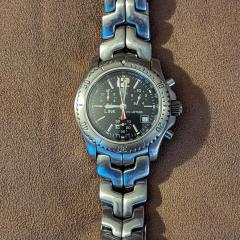Ultrasonic Jewel Cleaning But Not As You Know It!
-
Recently Browsing
- No registered users viewing this page.
-
Topics
-
Posts
-
Quick update. Both the barrel and the cover were bent. I did manage to strengthen them. The arbor seems to spin freely. The amplitude is still the same, at 49 its around 217-222. I was expecting some improvement. Will check again in 24 and 48h.
-
By Neverenoughwatches · Posted
Good for you Ross, its nice when that happens, I've never tried that or seen that video, i searched for it for ages. Thanks i will have a watch now 👍 Is that the three tools that look like mini tweezers ww ? -
By rhythmtime · Posted
I appreciate all of your responses and plan to take your advice. Especially, the advice to practice on inexpensive models that don’t matter before attempting something special. Over the years I have worked on cars, motorcycles and bicycles and I believe I have a feel for turning metal things lubricated with oil. But, as for really small things, this could quite a new adventure!
-






Recommended Posts